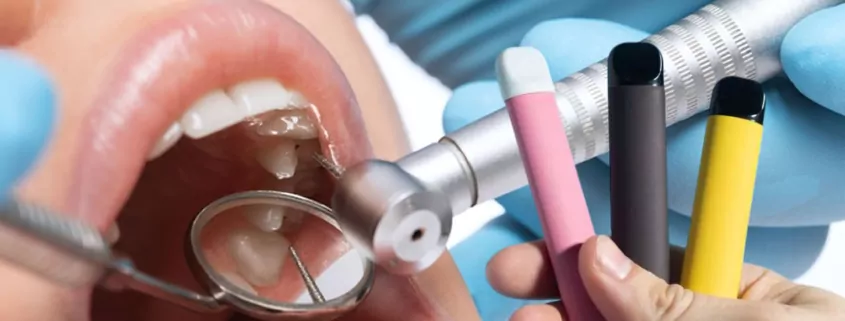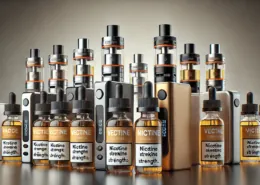Can You Vape After Tooth Extraction? Risks, Waiting Times & Safer Options
Guide on vaping after tooth/wisdom teeth removal: Risks (dry socket), how long to wait (72hrs+), managing cravings & safety tips.
Having a tooth extracted is a common dental procedure, often necessary to remove a damaged, decayed, or problematic tooth (like wisdom teeth) and maintain overall oral health. The recovery process, while usually straightforward, requires careful attention to allow your body to heal properly. For people who vape, one pressing question inevitably arises: Can I vape after my tooth extraction?
While the urge to reach for your vape, especially if you rely on nicotine, might be strong, the overwhelming consensus from dental professionals and scientific evidence is clear: vaping immediately after a tooth extraction poses significant risks to the healing process. It’s strongly advised to wait. This guide will delve into why post-extraction care is so critical, unpack the specific dangers vaping introduces, provide updated recommendations on how long you should wait based on current understanding, discuss safe ways to manage nicotine cravings, and offer advice for resuming vaping cautiously if you choose to do so later in your recovery.
Understanding Tooth Extraction Healing: The Crucial Role of the Blood Clot
When a tooth is removed, it leaves behind an empty socket in your jawbone. Your body’s natural healing response immediately kicks in. The first and most critical step is the formation of a blood clot within this socket. This clot isn’t just a simple scab; it serves several vital functions:
- Protection: It acts as a protective barrier, shielding the underlying sensitive bone and nerve endings from exposure to air, food particles, fluids, and bacteria.
- Foundation for Healing: It provides the framework for new tissue growth. Cells responsible for healing migrate into the clot, beginning the process of generating new gum tissue and eventually new bone to fill the socket.
- Pain Prevention: By covering the exposed bone and nerves, the clot prevents the intense pain associated with conditions like dry socket.
Preserving this blood clot, especially during the initial days following extraction, is paramount for a smooth, comfortable, and timely recovery.
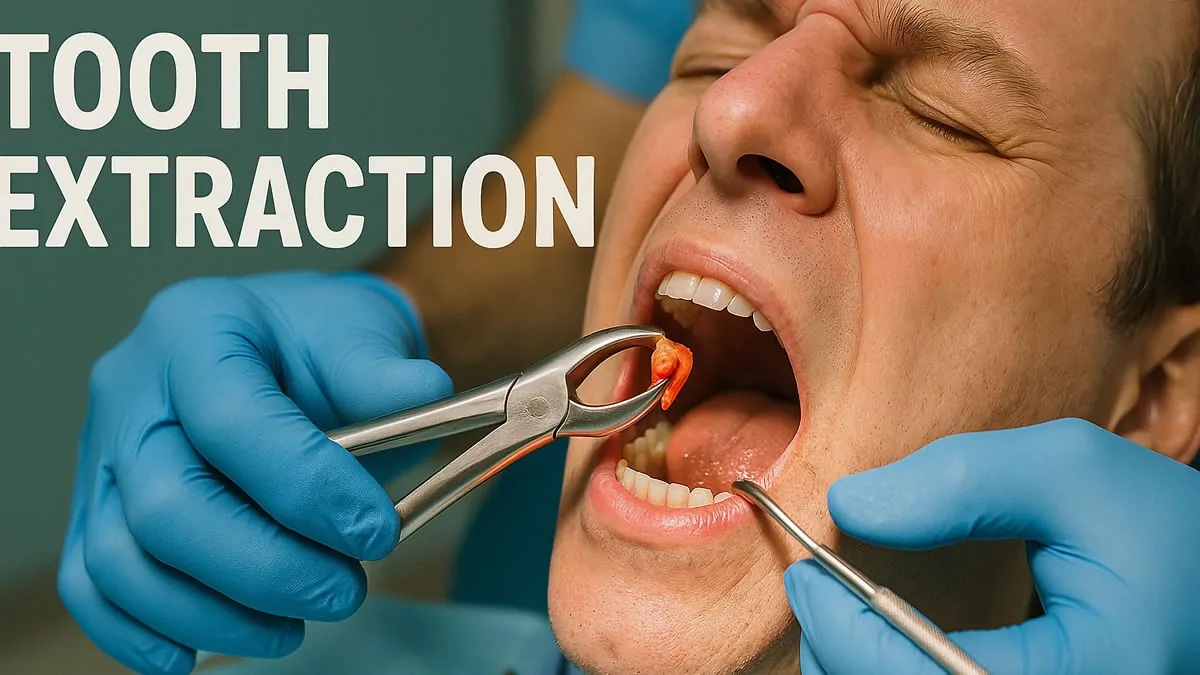
Why Vaping After Extraction is a Bad Idea: Unpacking the Risks
Vaping introduces several factors that can directly interfere with the delicate healing process and jeopardize the crucial blood clot. Here’s a breakdown of the primary risks:
1. Dry Socket (Alveolar Osteitis): The Biggest Threat
This is the most common and painful complication vapers risk after tooth extraction. Dry socket occurs when the protective blood clot is dislodged or dissolves prematurely, leaving the underlying bone and sensitive nerve endings exposed. This exposure leads to intense, often radiating pain, bad breath, and delayed healing.
How Vaping Causes It: The act of inhaling or sucking on a vape device creates significant negative pressure (suction) inside your mouth. Studies indicate this suction force can easily be strong enough (reaching -20 to -30 cm H2O) to physically pull the fragile blood clot out of the socket, especially within the first 48-72 hours when it’s still stabilizing (Riverside Dental on Dry Socket Risk). Research suggests the incidence of dry socket significantly increases in patients who smoke or vape post-extraction, rising from a baseline of 2-5% to potentially 12-18% or higher (Dr. Alijanian on Vaping Risks).
2. Delayed Healing: Nicotine’s Impact on Blood Flow
Nicotine, present in most e-liquids, is a potent vasoconstrictor – it causes blood vessels to narrow. Healthy healing relies on robust blood flow to deliver oxygen, nutrients, and immune cells to the extraction site. Nicotine constricts the tiny blood vessels in your gums, potentially reducing crucial blood supply to the healing socket by 30-50% (NatruSmile on Nicotine Effects). This impaired circulation can significantly slow down tissue repair, prolong inflammation, and delay overall healing.
Furthermore, nicotine can interfere with angiogenesis – the formation of new blood vessels essential for tissue regeneration – by suppressing key growth factors like VEGF (NatruSmile on VEGF Suppression).
3. Chemical Irritation and Impaired Tissue Repair
Vape aerosol isn’t just water vapor; it contains chemicals like propylene glycol (PG), vegetable glycerin (VG), flavorings, and nicotine metabolites. These substances can directly irritate the sensitive, healing tissues in the extraction socket. PG, being hygroscopic, can draw moisture away from the area. Certain flavoring chemicals (like aldehydes found in some fruit or cinnamon flavors) have been shown in studies to potentially impede the migration of epithelial cells needed to close the wound and can increase enzymes (MMP-9) that break down tissue components (NatruSmile on Chemical Effects). This chemical irritation can contribute to inflammation and slow down the healing timeline.
4. Increased Risk of Infection
An open wound like an extraction socket is vulnerable to infection. Vaping can increase this risk in several ways:
- Introducing Bacteria: Your vape device itself harbors bacteria from your mouth and the environment. Inhaling brings these bacteria directly towards the vulnerable extraction site.
- Impaired Immune Response: Nicotine has been shown to have immunosuppressive effects, potentially hindering the ability of immune cells like neutrophils to effectively clear bacteria from the wound site (NatruSmile on Immune Effects).
- Dry Socket Exposure: If the clot is dislodged, the exposed bone is much more susceptible to bacterial invasion and infection.
5. Potential Impact on Bone Healing
While more research is ongoing, some evidence suggests nicotine and potentially other vape components might negatively impact the underlying bone regeneration process. Studies indicate nicotine can disrupt the balance between bone-resorbing cells (osteoclasts) and bone-building cells (osteoblasts), potentially leading to slower or less dense bone fill in the socket over the longer term (NatruSmile on Bone Healing). While this might be less of an immediate concern than dry socket, it highlights potential long-term impacts on healing quality.
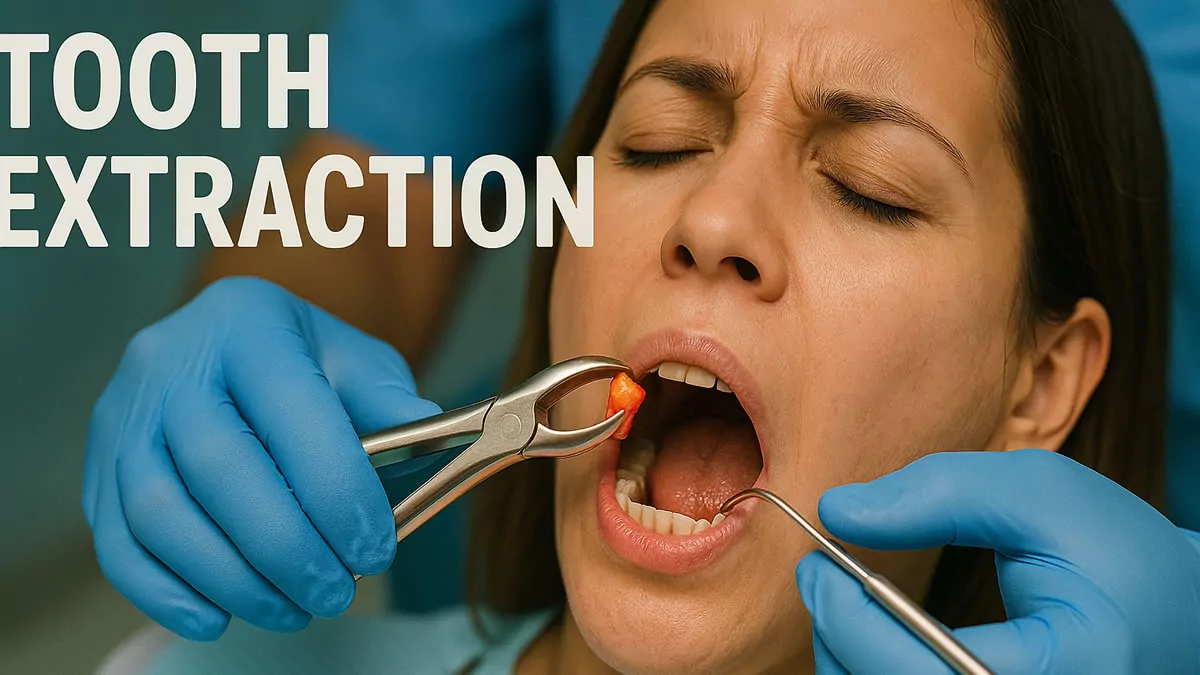
How Long Should You REALLY Wait to Vape After Extraction?
This is the critical question for many vapers. While older advice sometimes suggested 24-48 hours, current understanding of the healing process and the specific risks of vaping points towards longer minimum waiting times.
- Simple Extractions: For routine, non-surgical extractions, the absolute minimum recommended abstinence period is 48-72 hours. This allows the initial, most fragile stage of blood clot formation and stabilization to occur (Dr. Alijanian Minimum Wait; Riverside Dental Minimum Wait). Waiting the full 72 hours is generally safer.
- Surgical Extractions (including Wisdom Teeth): For more complex extractions, especially those involving impacted wisdom teeth or bone removal, a significantly longer waiting period is advised. Dentists and oral surgeons typically recommend waiting at least 7 days, and often up to 14 days (Riverside Dental on Wisdom Teeth). This extended period allows for more substantial soft tissue healing over the socket, reducing the risk of complications affecting the underlying bone.
Crucially, always follow the specific post-operative instructions given by your dentist or oral surgeon. They know the details of your procedure and your individual health factors. Don’t hesitate to ask them directly when it is safe for *you* to consider resuming vaping.
Can You “Cheat” with Gauze or Gentle Puffs?
Some vapers wonder if they can mitigate the risks by taking precautions like covering the extraction site with gauze while vaping or taking very gentle, small puffs.
Using Gauze: Unfortunately, placing gauze over the socket offers minimal protection against the risks of vaping. While it might momentarily shield the site from direct aerosol contact, it does nothing to prevent the negative pressure (suction) created during inhalation, which is the primary risk factor for dislodging the clot. Furthermore, heat and chemicals can still reach and irritate the healing tissues around the gauze.
Gentle Inhalation: While consciously trying to inhale very gently might slightly reduce the amount of suction compared to a hard draw, it does not eliminate the negative pressure entirely. Any suction still poses a risk to the fragile clot. Additionally, this doesn’t address the risks associated with nicotine’s vasoconstriction or chemical irritation from the aerosol. It’s still a risky approach, especially in the critical first few days.
Attempting these “workarounds” is generally not recommended by dental professionals.
Managing Nicotine Cravings Safely During Recovery
Dealing with nicotine cravings immediately after surgery, when you’re advised not to vape, can be incredibly challenging. Fortunately, there are safer alternatives to manage withdrawal without compromising your oral healing, but always discuss these with your dentist or doctor first.
The key is to use methods that deliver nicotine without involving oral suction or introducing substances directly into the mouth/healing socket.
- Nicotine Patches (Transdermal): These are often the most recommended option immediately post-extraction. Patches deliver a steady dose of nicotine through the skin, completely bypassing the mouth. This avoids suction and oral irritation while helping to manage withdrawal symptoms (Mayo Clinic on Cravings).
- Nicotine Gum/Lozenges/Sublingual Tablets (Use With Caution & Dentist Approval): While these avoid inhalation, they still involve the mouth. Chewing gum might be difficult or painful near an extraction site. Lozenges and tablets dissolve, releasing nicotine orally. These should generally only be used after the initial critical healing phase (e.g., after 72 hours or as advised by your dentist) and with their explicit approval, as they could still potentially irritate the site or require mouth movements best avoided early on (NatruSmile on Alternatives).
- Nicotine Nasal Sprays (Use With Caution & Dentist Approval): These deliver nicotine quickly but can cause nasal irritation and should only be used if recommended by a healthcare professional (Riverside Dental on Alternatives).
- Behavioral Strategies & Other Support: Don’t underestimate non-pharmacological methods. Distraction techniques, deep breathing, staying hydrated (with water!), avoiding triggers, and seeking support from resources like quitlines (SAMHSA Helpline) or apps can be very helpful (American Cancer Society Tips).
If cravings are severe, discuss prescription options like Varenicline or Bupropion with your doctor well *before* your extraction, as these need time to take effect.
Ecigator is one of the well-known vape brands spun off from FM Technology Co., Ltd, it’s an ISO-certified disposable vape manufacturer for OEMs, ODMs, and OBM since 2010. The founder team comes from top firms with more than 10 years of experience in the vaping industry and has devoted thousands of hours to providing users with a better and better experience.
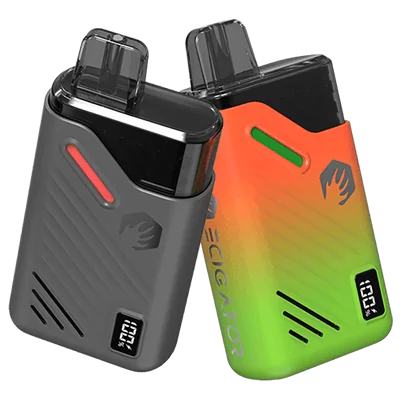
18K Disposable Pod Kit
Disposable Pod Kit – 18ml changeable pod with 650mAh rechargeable battery.
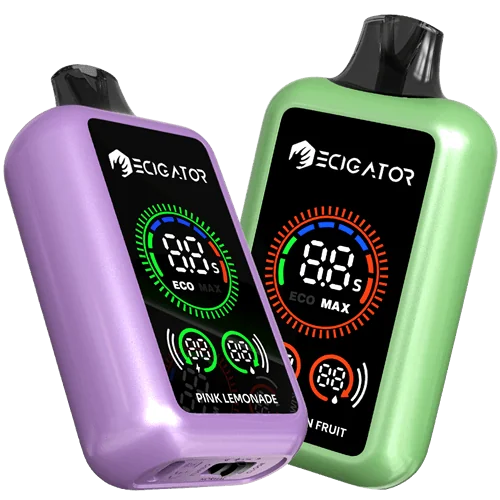
20K with Large Screen
20000 Puffs Disposable Vape with large screen. Normal and Boost working modes.
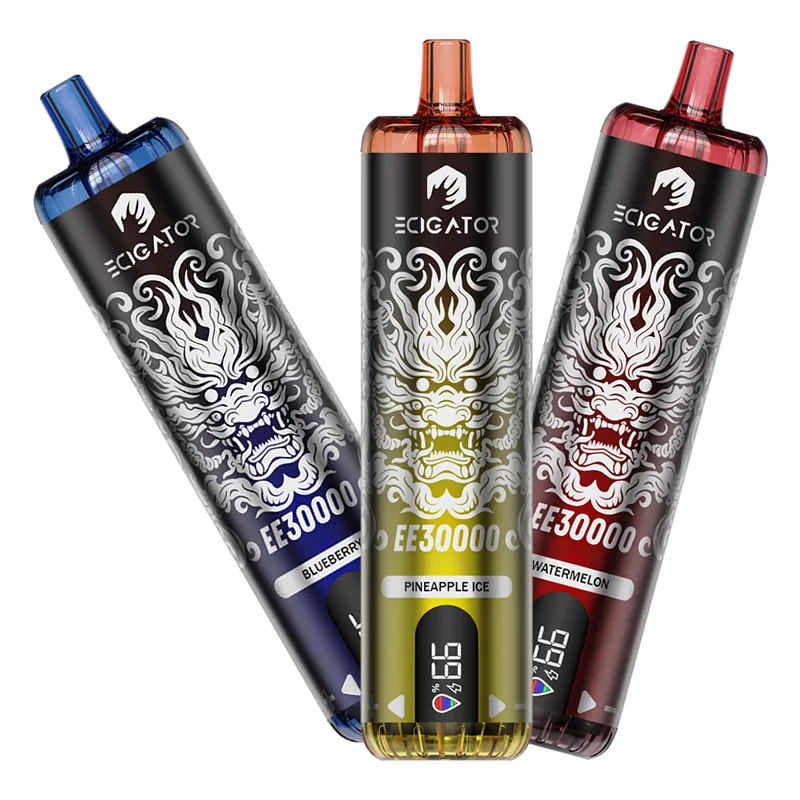
30K DTL Disposable
30K Puffs DTL(Directly to Lung) disposable vape with airflow control and screen.
Resuming Vaping (If You Choose To): Proceed with Caution
If, after waiting the recommended period advised by your dentist (ideally 7-14 days, especially after wisdom teeth removal), you decide to resume vaping, do so with extreme caution:
- Start Slowly and Gently: Use very light, gentle puffs initially. Avoid forceful inhalation that creates strong suction.
- Consider Lower Nicotine/Higher VG: Using an e-liquid with a lower nicotine concentration may reduce potential irritation and vasoconstriction. A higher VG ratio might feel smoother and less drying than high PG.
- Keep it Clean: Thoroughly clean your vape device before resuming use to minimize introducing bacteria into your still-healing mouth.
- Stay Hydrated: Continue drinking plenty of water.
- Listen to Your Body: If you experience any pain, discomfort, or unusual sensations at the extraction site after resuming vaping, stop immediately and consult your dentist.
Recognizing Complications: When to Call Your Dentist Immediately
Monitor your healing progress closely. Contact your dentist or oral surgeon without delay if you experience any of the following signs, which could indicate dry socket or infection:
- Severe, throbbing, or radiating pain starting a few days after extraction.
- Visible bone in the socket.
- Bad taste or persistent bad breath originating from the socket.
- Increased swelling, redness, or pus around the extraction site.
- Fever.
Prompt treatment for complications like dry socket (which often involves cleaning the socket and placing a medicated dressing) is essential for pain relief and proper healing.
Conclusion: Prioritize Healing Over Vaping
While the urge to vape after a tooth extraction can be strong, the potential risks – particularly developing the intensely painful condition of dry socket, delaying healing, and increasing infection risk – are significant. Dental professionals strongly advise abstaining from vaping for a minimum of 72 hours after simple extractions and for at least one to two weeks following surgical extractions like wisdom tooth removal. Always follow your surgeon’s specific instructions.
Attempting workarounds like using gauze or taking gentle puffs does not eliminate the core risks associated with suction and chemical exposure. Safer alternatives like nicotine patches (with approval) can help manage cravings during the critical initial healing phase. When resuming vaping, do so cautiously and be vigilant for any signs of complications.
Ultimately, prioritizing the proper healing of your extraction site sets the foundation for better long-term oral health. While the recovery period is temporary, complications can be painful and prolonged. Making the wise choice to wait before vaping is an investment in a smoother, faster, and more comfortable recovery.
- Malaysia Negeri Sembilan Backs Vape Ban, Awaits Clear Laws - August 5, 2025
- Is It Illegal to Vape or Smoke While Driving in Massachusetts? - August 5, 2025
- Austria Plans to Ban Disposable E-Cigarettes - August 5, 2025

